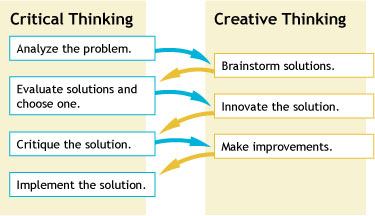
Incorporate opportunities for teaching with data and including representations of geologic phenomena through development or use of models.I want my students to both represent and interpret geologic phenomena.

Tips and examples for improving procedural knowledge Encourages students to participate in a class discussion, guided by the instructor, to determine the reasoning behind an explanation or to provide an alternative explanation for a phenomenon.Features a brief end-of-lesson reflection to allow students to assess their level of understanding.Includes at least one thought-provoking activity followed by an opportunity to assess the procedure.Incorporates opportunities for students to make predictions or estimations or to generate hypotheses (although it may not include means of testing these conjectures).Gives students use a variety of means to represent phenomena under discussion (e.g., graphs, maps, rock samples) AND interpret different types of information.azimuth for a given location at different seasons.Ĭonsider structuring your class so that it: For example, an instructor teaching an atmospheric science course asked students to plot sun angle vs. Classes that discuss weather phenomena can introduce multiple representations of data in forms such as maps, graphs, diagrams, photographs, physical gestures, and short videos and incorporate some of these into exercises requiring the interpretation of data. Procedural knowledge could be further activated in such an assignment by asking students if their answer is a reasonable age for the planet. For example, an instructor could discuss an equation for determining exponential decay and then have students work together to use the equation to determine the age of the oldest rock on Earth. Classes that exhibit a focus on Procedural Knowledge include opportunities for students to participate in thought-provoking activities (e.g., predictions, estimations, hypotheses) rather than assignments that only require simple yes/no answers. For instance, few instructors ask students to reflect on their learning that is, they don't ask students to assess their understanding of critical concepts or to determine which of the concepts were the most important. Many classes that feature active learning can still fail to fully realize Procedural Knowledge opportunities to enhance learning. For example, in a class exhibiting high Propositional Knowledge, the teacher may include elements of abstraction in the lesson, whereas in Procedural Knowledge, the teacher thinks about how the students will represent phenomena, which could be illustrated with a variety of abstractions (e.g., drawing graphs, making sketches, generating diagrams). Characteristics/examples of classes with low and high procedural knowledgeSeveral aspects of procedural knowledge can be related to actions instructors take within the Lesson Design and Propositional Knowledge themes.

The Pedagogy in Action module on the Process of Science provides guidance and examples for incorporating the process of science into the classroom. The Cutting Edge Metacognition module gives strategies for fostering metacognitive habits of mind in students.


Through practice and reflection, students are able to apply these skills in new contexts and recognize their own critical thinking abilities. Lessons that engage students and varied opportunities for making predictions, estimations, or hypotheses and designing ways to test them, help students to understand the nature of scientific inquiry. This theme measures what students do in the classroom to enhance their learning. Jump down to: Characteristics/examples of classes with low and high procedural knowledge | Considerations for structuring your class | Tips and examples for improving procedural knowledge What is procedural knowledge and how does it affect learning?


 0 kommentar(er)
0 kommentar(er)
